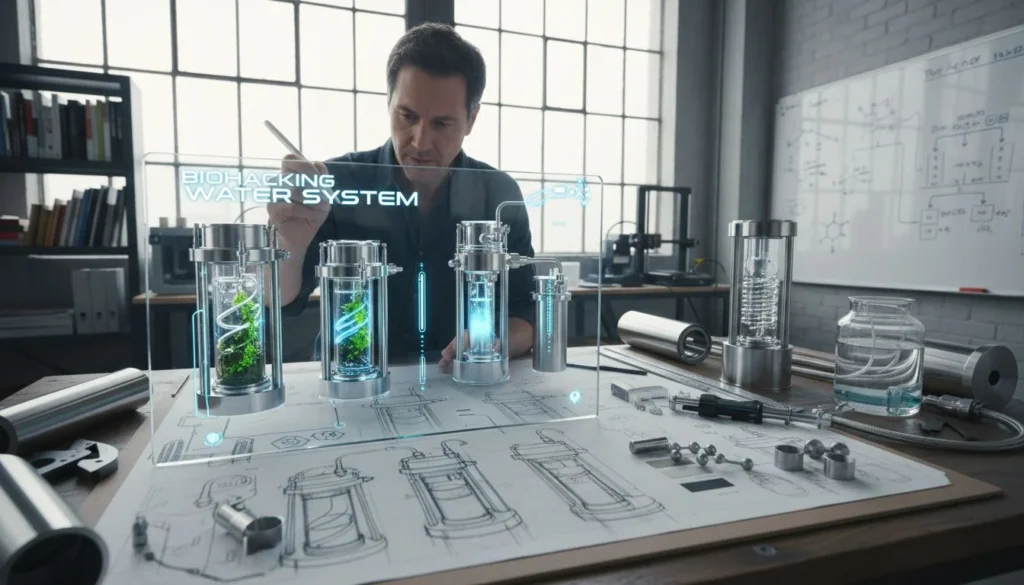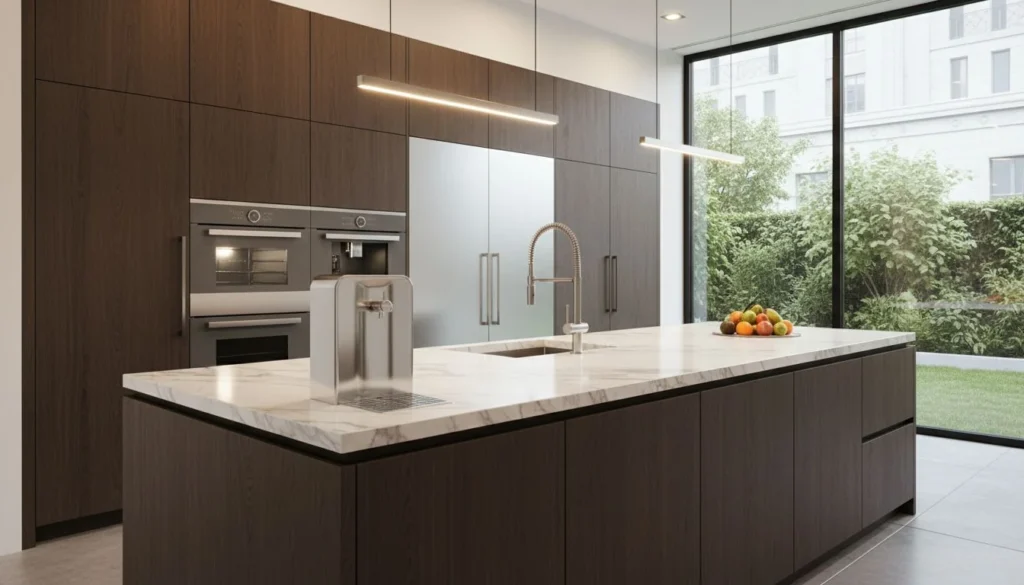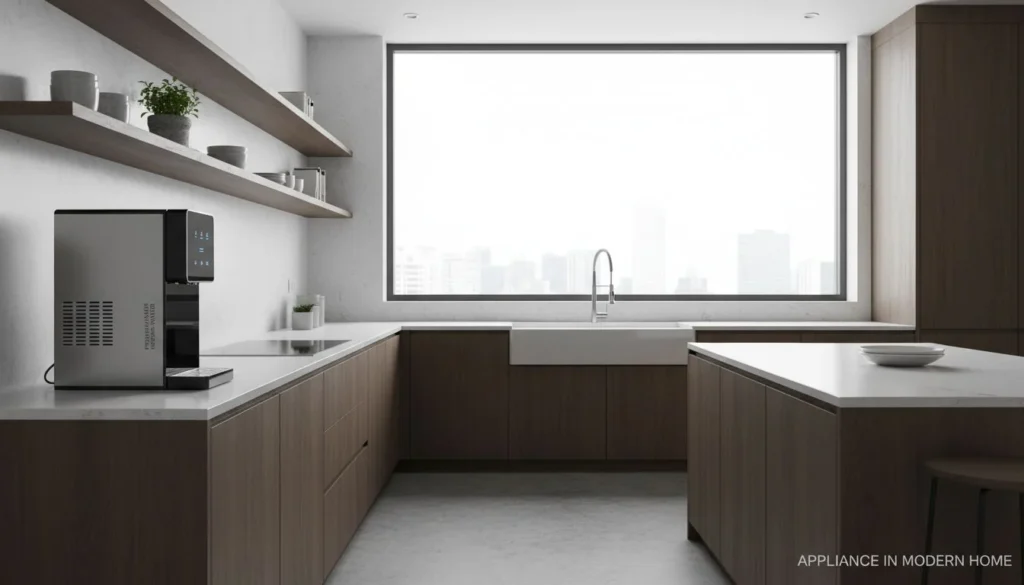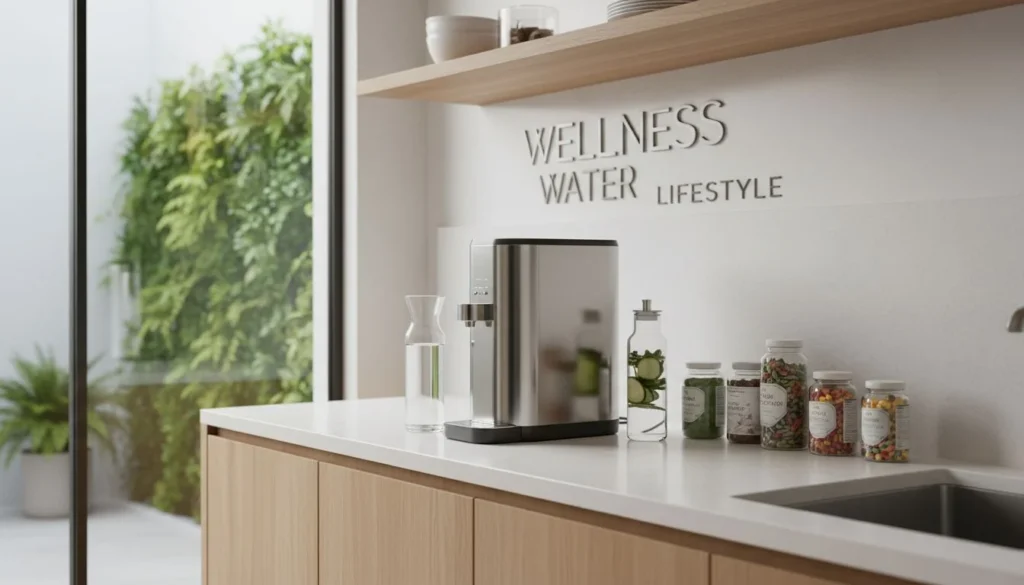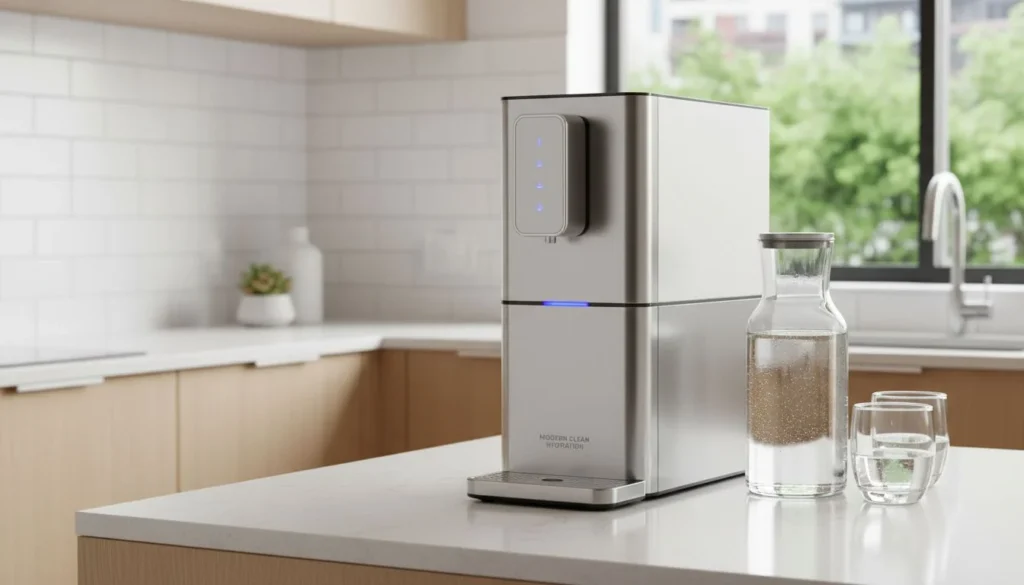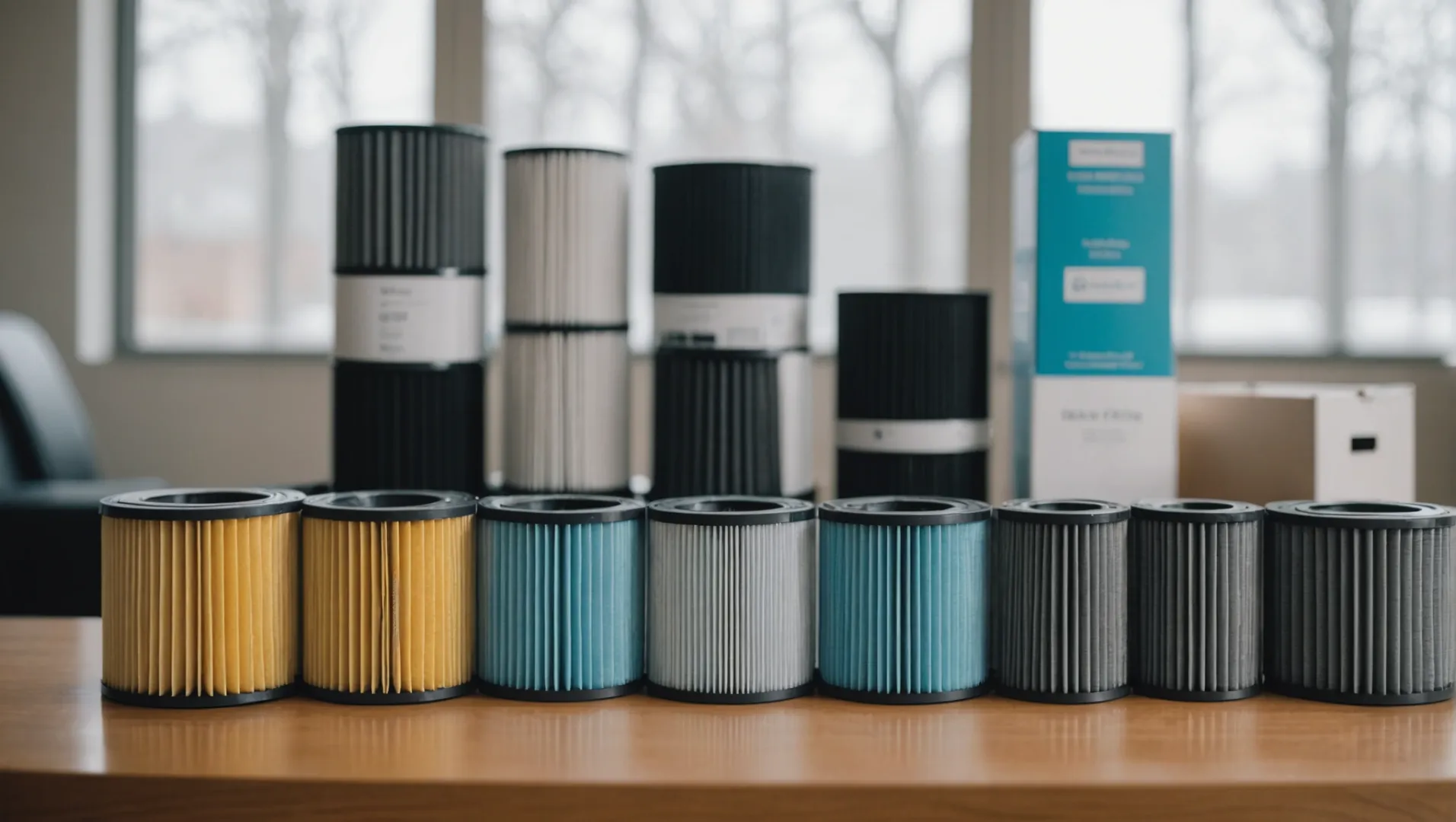
قد يكون الإبحار في عالم فلاتر الهواء أمراً شاقاً، ولكن لا يجب أن يكون كذلك!
يعتمد اختيار وسائط فلتر الهواء المناسبة على الملوثات المحددة التي تحتاج إلى استهدافها والسيناريوهات التي تعالجها. فهم MERV تساعدك التصنيفات وأنواع الفلاتر مثل HEPA أو الكربون المنشط في اتخاذ قرارات مستنيرة لتنقية الهواء بفعالية.
في حين أن أساسيات وسائط فلاتر الهواء ضرورية، فإن التعمق أكثر في سيناريوهات محددة مثل التحكم في روائح الحيوانات الأليفة أو إدارة مخاطر العفن يكشف عن حلول مصممة خصيصًا. استمر في القراءة لاستكشاف النصائح العملية ورؤى الخبراء لاختيار أفضل الفلاتر لاحتياجاتك.
تلتقط فلاتر HEPA ما لا يقل عن 99.97% من الجسيمات الصغيرة التي لا يقل حجمها عن 0.3 ميكرون.صحيح
تتميز فلاتر HEPA بكفاءة عالية، حيث تلتقط معظم الجسيمات الدقيقة، مما يحسّن جودة الهواء.
ما هي MERV التقييمات وما أهميتها؟
فهم أهمية MERV تعتبر التقييمات ضرورية لاختيار فلاتر الهواء المناسبة لبيئة منزلك أو مكتبك.
MERV تقيس التصنيفات، التي تتراوح من 1 إلى 20، قدرة مرشح الهواء على التقاط الجسيمات. الأعلى MERV تشير القيم إلى ترشيح أدق، مما يحبس الجسيمات الأصغر مثل الغبار وحبوب اللقاح وحتى البكتيريا، وبالتالي يحسّن جودة الهواء الداخلي بشكل كبير.
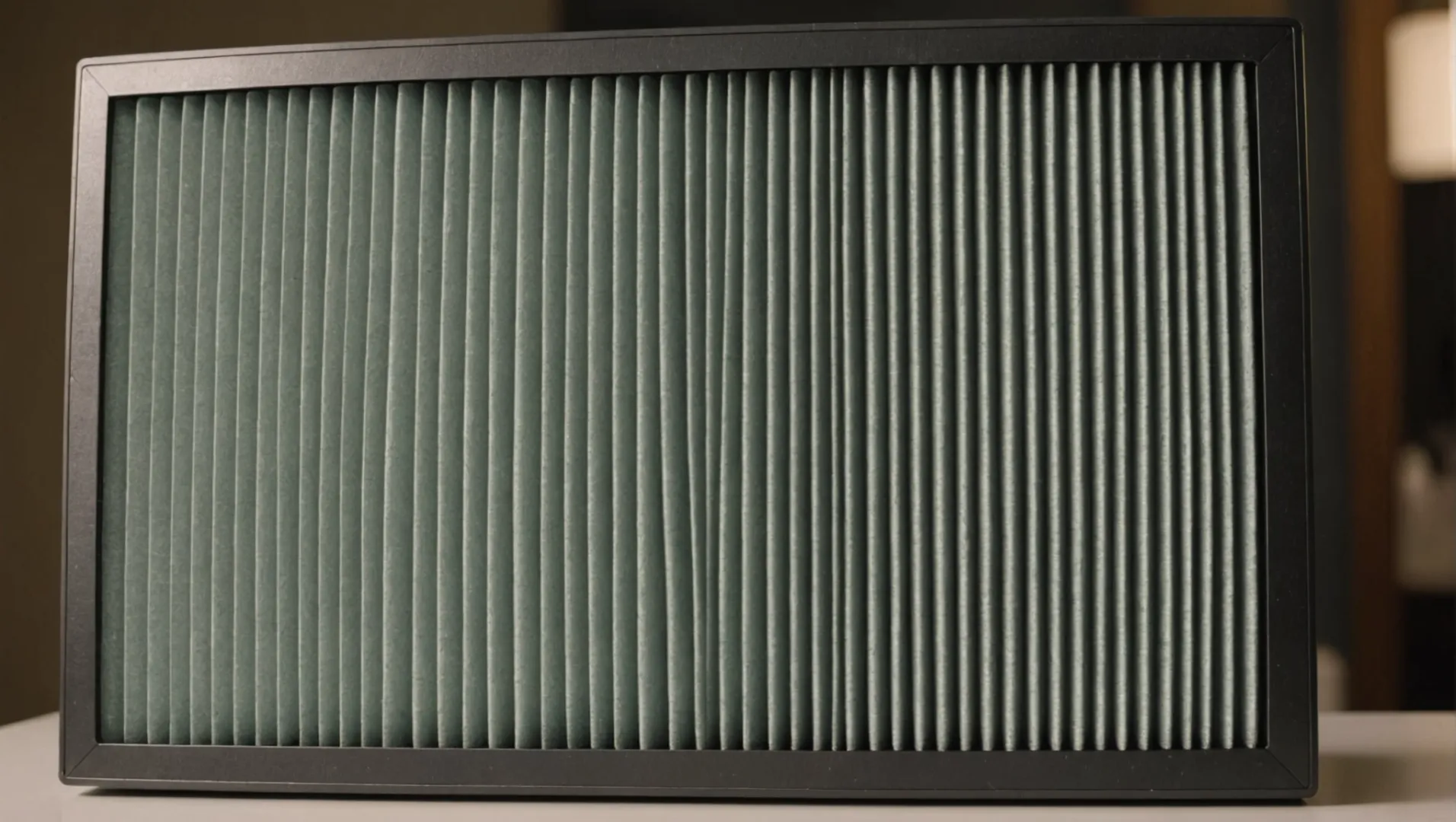
الفهم MERV التقييمات
MERV تعني الحد الأدنى من قيمة الإبلاغ عن الكفاءة. وهو معيار يقيّم الفعالية الإجمالية لمرشحات الهواء. يمتد المقياس من 1 إلى 20، حيث تشير الأرقام الأعلى إلى قدرة أكبر على التقاط الجسيمات الصغيرة. على سبيل المثال، المرشح ذو MERV التصنيف1 من 1 قادر على التقاط الجسيمات الأكبر حجمًا مثل ألياف السجاد، في حين أن الفلتر الذي يبلغ تصنيفه 13 قادر على التقاط جسيمات صغيرة بحجم 0,3 ميكرون، مثل الغبار وحبوب اللقاح وبعض البكتيريا.
كيف MERV تأثير التقييمات على جودة الهواء
باستخدام مرشح مع MERV يمكن أن يعزز التصنيف جودة الهواء الداخلي بشكل كبير. تُعد الفلاتر ذات التصنيف الأعلى ضرورية للبيئات التي يكون فيها نقاء الهواء أمراً بالغ الأهمية، مثل المستشفيات أو المنازل التي تعاني من الحساسية. ومع ذلك، من المهم تحقيق التوازن بين كفاءة الترشيح وتدفق الهواء؛ فالمرشح المقيّد للغاية يمكن أن يعيق تدفق الهواء ويقلل من كفاءة نظام التدفئة والتهوية وتكييف الهواء.
الجدول: MERV التصنيفات وأنواع الجسيمات
| MERV التقييم | اللقطات |
|---|---|
| 1-4 | حبوب اللقاح وعث الغبار |
| 5-8 | جراثيم العفن ورذاذ الشعر |
| 9-12 | الليجيونيلا، غبار الرصاص |
| 13-16 | البكتيريا، جزيئات الدخان |
| 17-20 | الفيروسات، غبار الكربون |
تطبيقات عملية لـ MERV التقييمات
عند اختيار فلتر الهواء، ضع في اعتبارك الاحتياجات المحددة لبيئتك. على سبيل المثال:
- منازل مع حيوانات أليفة قد تستفيد من المرشحات التي تحتوي على MERV التصنيف2 5 على الأقل لالتقاط وبر الحيوانات الأليفة.
- العائلات التي لديها أطفال صغار يجب أن تأخذ بعين الاعتبار الفلاتر ذات التصنيف 13 أو أعلى لإزالة البكتيريا والمواد المسببة للحساسية بفعالية.
- المناطق المعرضة لدخان حرائق الغابات قد تتطلب مرشحات ذات MERV تصنيف 14 أو أكثر لاحتجاز جزيئات الدخان وتحسين جودة الهواء.
يساعدك فهم هذه الجوانب في تكييف اختيارك وفقاً لاحتياجاتك الخاصة، مما يضمن لك السلامة والراحة.
تتراوح تصنيفات MERV من 1 إلى 20.صحيح
تقيس تصنيفات MERV كفاءة فلتر الهواء على مقياس من 1 إلى 20.
تقلل تصنيفات MERV الأعلى من كفاءة HVAC.صحيح
يمكن للمرشحات ذات MERV العالية أن تحد من تدفق الهواء، مما يؤثر على أنظمة التدفئة والتهوية وتكييف الهواء.
كيف تعمل أنواع فلاتر الهواء المختلفة ضد ملوثات معينة؟
اكتشف كيف تعالج أنواع فلتر الهواء المختلفة ملوثات معينة لضمان هواء داخلي أنقى وأكثر صحة.
تم تصميم أنواع فلاتر الهواء المختلفة لمكافحة ملوثات معينة. تتفوق فلاتر HEPA في احتجاز الجسيمات الدقيقة مثل الغبار والمواد المسببة للحساسية، بينما تعتبر فلاتر الكربون المنشط مثالية للتخلص من الروائح والمركبات العضوية المتطايرة (VOCs). يتضمن اختيار الفلتر المناسب فهم هذه الوظائف ومطابقتها مع الملوثات التي ترغب في معالجتها.

فهم أساسيات فلاتر الهواء
فلاتر الهواء ضرورية للحفاظ على جودة الهواء الداخلي عن طريق إزالة الملوثات من الهواء. وهي تختلف بشكل كبير من حيث التصميم والمواد والملوثات المستهدفة. سنستكشف هنا كيفية عمل أنواع مختلفة من فلاتر الهواء لمعالجة ملوثات داخلية محددة بفعالية.
فلاتر HEPA: التقاط الجسيمات الدقيقة
تُعرف فلاتر الجسيمات عالية الكفاءة للهواء (HEPA) بقدرتها على احتجاز ما لا يقل عن 99.971 تيرابايت 3 تيرابايت من الجسيمات الصغيرة التي لا يقل حجمها عن 0.3 ميكرون. وهي فعالة بشكل خاص ضد الغبار3وحبوب اللقاح وجراثيم العفن ووبر الحيوانات الأليفة. وهذا يجعل فلاتر HEPA خياراً ممتازاً للمنازل التي تعاني من الحساسية أو تلك التي تسعى إلى تحسين جودة الهواء بشكل عام.
فلاتر الكربون المنشط: امتصاص الروائح والمواد الكيميائية
تتكون مرشحات الكربون المنشط من مادة الكربون المعالجة لتكون مسامية للغاية. يسمح لها هذا التصميم بامتصاص الغازات والروائح، بما في ذلك المركبات العضوية المتطايرة المنبعثة من المنتجات المنزلية مثل الدهانات ومواد التنظيف. تُعد هذه الفلاتر مثالية للبيئات التي يكون فيها التحكم في الروائح أمرًا ضروريًا، مثل المنازل التي بها حيوانات أليفة أو مدخنين.
الفلاتر المضادة للبكتيريا: استهداف نمو الميكروبات
بالنسبة لأولئك الذين يشعرون بالقلق من نمو الميكروبات مثل العفن أو البكتيريا، توفر الفلاتر المضادة للبكتيريا حلاً متخصصاً. وغالباً ما تشتمل هذه الفلاتر على مواد معالجة بعوامل مضادة للميكروبات تعمل على تحييد الكائنات الدقيقة الضارة، وبالتالي تقلل من خطر حدوث مشاكل صحية مرتبطة بالعفن.
مرشحات الأشعة فوق البنفسجية (UV): تحييد الجراثيم
تستخدم فلاتر الأشعة فوق البنفسجية الأشعة فوق البنفسجية لقتل أو تعطيل الكائنات الدقيقة مثل البكتيريا والفيروسات. وعلى الرغم من أنها ليست فعالة في إزالة الجسيمات، إلا أنها تعمل كنظام تكميلي لتعزيز تنقية الهواء في البيئات التي يكون فيها التعرض للجراثيم مصدر قلق، مثل المستشفيات أو المنازل خلال موسم الإنفلونزا.
الجمع بين المرشحات لتحقيق أقصى قدر من الفعالية
تجمع العديد من أجهزة تنقية الهواء الحديثة بين أنواع مختلفة من الفلاتر لمعالجة مجموعة واسعة من الملوثات. على سبيل المثال، قد تحتوي الوحدة على كل من مرشحات HEPA ومرشحات الكربون المنشط، مما يوفر حماية شاملة ضد الجسيمات والروائح الكريهة. عند اختيار جهاز لتنقية الهواء، ضع في اعتبارك الموديلات التي تسمح بهذا التخصيص لتناسب احتياجاتك الخاصة.
من خلال فهم الأدوار المميزة التي يؤديها كل نوع من أنواع الفلاتر في تنقية الهواء، يمكنك اتخاذ قرارات مستنيرة بشأن الخيارات التي تناسب التحديات البيئية التي تواجهك.
تلتقط فلاتر HEPA 99.97% من الجسيمات الصغيرة بحجم 0.3 ميكرون.صحيح
تم تصميم مرشحات HEPA لاحتجاز الجسيمات الدقيقة، مما يضمن جودة هواء عالية.
فلاتر الكربون المنشط غير فعالة ضد المركبات العضوية المتطايرة.خطأ
تمتص فلاتر الكربون المنشط المركبات العضوية المتطايرة بفعالية، مما يقلل من الروائح والمواد الكيميائية.
ما هي الفلاتر الأفضل لمالكي الحيوانات الأليفة القلقين بشأن الروائح الكريهة؟
يمكن أن تكون روائح الحيوانات الأليفة مستمرة وصعبة التحكم فيها. يمكن أن يُحدث اختيار فلتر الهواء المناسب فرقاً كبيراً في الحفاظ على بيئة منزلية منعشة.
بالنسبة لمالكي الحيوانات الأليفة، تُعدّ الفلاتر التي تجمع بين الكربون المنشط وHEPA 13 الأكثر فعالية. يحبس الكربون المنشط جزيئات الروائح، بينما يلتقط HEPA 13 وبر الحيوانات الأليفة والبكتيريا المنقولة بالهواء، مما يضمن منزلاً أنظف وخالٍ من الروائح.

دور الكربون المنشط في التحكم في الروائح الكريهة
فلاتر الكربون المنشط فعالة للغاية في السيطرة على روائح الحيوانات الأليفة. فهي تعمل عن طريق حبس الجزيئات المسببة للروائح على مساحة سطحها الكبيرة، مما يؤدي إلى تحييد الروائح المنبعثة من الحيوانات الأليفة بشكل فعال. وهذا مفيد بشكل خاص للأسر التي لديها حيوانات أليفة متعددة أو تلك التي لديها حيوانات ذات رائحة قوية.
HEPA 13: ضروري لمالكي الحيوانات الأليفة
تشتهر فلاتر HEPA 13 بقدرتها على التقاط الجسيمات الصغيرة، بما في ذلك وبر الحيوانات الأليفة والبكتيريا. ويُعدّ هذا المستوى من الترشيح ضرورياً لمالكي الحيوانات الأليفة الذين يرغبون في ضمان التحكم في الروائح والمواد المسببة للحساسية بفعالية. ويؤدي الجمع بين HEPA 13 والكربون المنشط إلى إنشاء ثنائي قوي ضد الملوثات المتعلقة بالحيوانات الأليفة.
فهم حدود المرشحات الأساسية
في حين أن الفلاتر الأساسية يمكنها إزالة الجسيمات الكبيرة، إلا أنها غالباً ما تقصر في التحكم في الروائح والمواد المسببة للحساسية الأصغر حجماً. يجب على مالكي الحيوانات الأليفة البحث عن الفلاتر التي تشير على وجه التحديد إلى قدرات التحكم في الروائح، مثل تلك التي تحتوي على تقنية الكربون المنشط4.
أهمية اختيار مورد أجهزة تنقية الهواء المناسبة
إن اختيار مورد أجهزة تنقية الهواء المتخصص في المنتجات عالية الأداء أمر بالغ الأهمية. يعمل تدفق الهواء عالي الطاقة ومستويات الضوضاء المنخفضة على تعزيز كفاءة فلاتر HEPA، مما يضمن تنقية شاملة. عند اختيار المورّد، ضع في اعتبارك خبرته في تقديم خيارات متنوعة من الفلاتر وقدرته على الحفاظ على معدل توصيل الهواء النظيف العالي (CADR).
عوامل يجب مراعاتها عند التسوق لشراء الفلاتر
| الميزة | الأهمية |
|---|---|
| الكربون المنشط | ضروري لتحييد روائح الحيوانات الأليفة. |
| HEPA 13 | يلتقط وبر الحيوانات الأليفة والبكتيريا بفعالية. |
| مستوى الضوضاء | ضوضاء منخفضة تضمن لك الراحة في أماكن المعيشة. |
| تدفق الهواء | تدفق الهواء العالي ضروري للترشيح الفعال. |
نصائح عملية للحفاظ على منزل جديد
تعمل الصيانة الدورية لجهاز تنقية الهواء، مثل استبدال الفلتر وتنظيفه في الوقت المناسب، على زيادة كفاءته إلى أقصى حد. من المفيد أيضاً ضمان التهوية الجيدة والتنظيف المنتظم لمناطق الحيوانات الأليفة لاستكمال استخدام فلاتر الهواء.
تعمل فلاتر الكربون المنشط على تحييد روائح الحيوانات الأليفة بفعالية.صحيح
يقوم الكربون المنشط بحبس جزيئات الروائح الكريهة وتحييد روائح الحيوانات الأليفة.
الفلاتر الأساسية كافية للتعامل مع روائح الحيوانات الأليفة.خطأ
تفتقر الفلاتر الأساسية إلى قدرات التحكم في الروائح مقارنةً بالفلاتر المتقدمة.
كيف يمكن للوالدين ضمان جودة الهواء الآمن للأطفال في المنزل؟
إن تهيئة بيئة آمنة أمر بالغ الأهمية لصحة طفلك، وتعد جودة الهواء عاملاً مهماً. ولكن كيف يمكن للآباء والأمهات التأكد من أن الهواء الذي يتنفسه طفلهم نظيف وآمن؟
لضمان جودة هواء آمنة للأطفال الرضع في المنزل، يجب على الآباء استخدام أجهزة تنقية الهواء المزودة بمرشحات HEPA 13 أو 14 لإزالة جزيئات PM2.5 بفعالية. بالإضافة إلى ذلك، يمكن أن يساعد الحفاظ على التهوية الجيدة وتجنب التدخين في الأماكن المغلقة وتنظيف الأسطح بانتظام في الحفاظ على بيئة داخلية صحية.
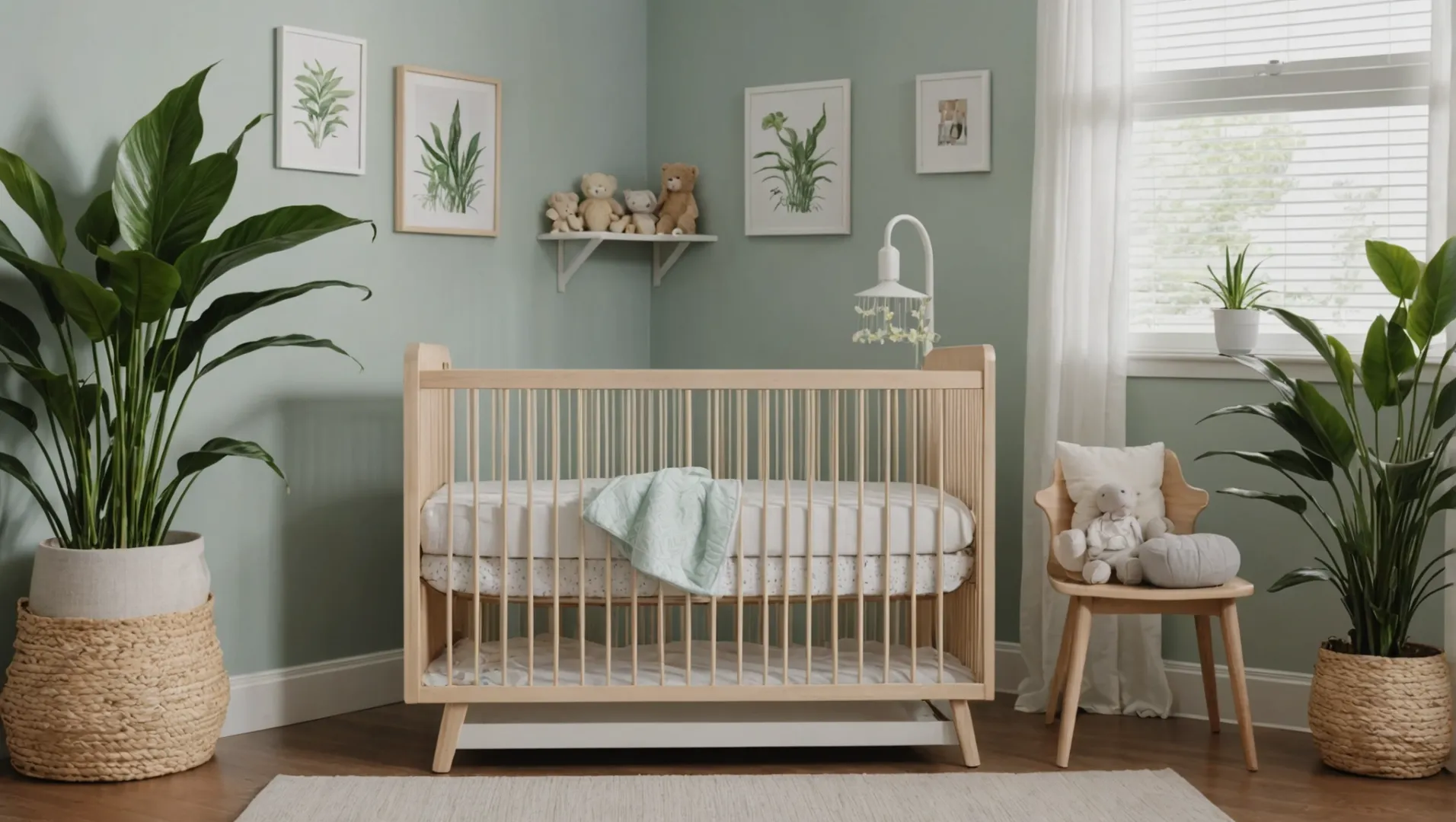
فهم ملوثات الهواء وتأثيراتها على الأطفال الرضع
الأطفال الرضع معرضون بشكل خاص للملوثات المحمولة جواً لأن أجهزتهم التنفسية لا تزال في طور النمو. تشمل الملوثات الشائعة في الأماكن المغلقة عث الغبار وجراثيم العفن ووبر الحيوانات الأليفة وجزيئات PM2.5، والتي يمكن أن تؤدي إلى تفاقم مشاكل الجهاز التنفسي مثل الربو أو الحساسية. من خلال فهم هذه الملوثات، يمكن للآباء والأمهات اتخاذ إجراءات مستهدفة للحد من تأثيرها.
دور فلاتر HEPA في تنقية الهواء
تشتهر مرشحات الجسيمات عالية الكفاءة للهواء (HEPA) بقدرتها على التقاط الجسيمات الصغيرة. بالنسبة للوالدين القلقين بشأن PM2.5، يوصى باستخدام مرشحات HEPA 13 أو حتى مرشحات HEPA 14، حيث يمكنها التقاط ما يصل إلى 99.97% من الجسيمات المحمولة في الهواء التي يصل حجمها إلى 0.3 ميكرون. وهذا يجعلها فعالة للغاية في الحد من وجود الملوثات الضارة في المنزل.
تدابير إضافية لضمان سلامة الهواء
في حين أن فلاتر HEPA5 دورًا مهمًا، فهي جزء من استراتيجية أوسع لضمان هواء نظيف:
- الحفاظ على تهوية جيدة: تأكد من أن منزلك جيد التهوية عن طريق فتح النوافذ عندما تسمح جودة الهواء الخارجي بذلك.
- التنظيف المنتظم: قم بتنظيف الأسطح بالمكنسة الكهربائية المجهزة بتقنية HEPA لتقليل تراكم الغبار.
- تجنب التدخين في الأماكن المغلقة: يحتوي الدخان على العديد من المواد الكيميائية الضارة التي يمكن أن تبقى في الهواء لفترة طويلة بعد توقف التدخين.
- النباتات المنزلية: يمكن لبعض النباتات مثل النباتات العنكبوتية وزنابق السلام تحسين جودة الهواء الداخلي بشكل طبيعي عن طريق امتصاص الملوثات.
اختيار جهاز تنقية الهواء المناسب
عند اختيار جهاز تنقية الهواء، يجب مراعاة عوامل مثل حجم الغرفة ومستويات الضوضاء. يضمن الجهاز ذو معدل توصيل الهواء النظيف (CADR) العالي تنقية الهواء بكفاءة دون ضوضاء مفرطة، وهو أمر ضروري للحفاظ على بيئة هادئة لطفلك. يمكن أن يكون الرجوع إلى المراجعات والمقارنات بين الموديلات الأعلى تقييماً مفيداً عند الاختيار.
المراقبة والتعديل بناءً على الاحتياجات
وأخيراً، استخدم أجهزة مراقبة جودة الهواء الداخلي لتتبع مستويات الملوثات. وهذا يسمح للآباء بتعديل استراتيجياتهم حسب الحاجة، مما يضمن أن التدابير التي يتخذونها تحافظ بشكل فعال على بيئة تنفس آمنة لأطفالهم. يمكن أن توفر المراجعة المنتظمة لأحدث الأبحاث ونصائح الخبراء أيضاً رؤى جديدة لتحسين جودة الهواء الداخلي.
تلتقط مرشحات HEPA 13 99.97% من الجسيمات.صحيح
تم تصميم فلاتر HEPA 13 لحبس الجسيمات الصغيرة حتى 0.3 ميكرون.
لا يؤثر التدخين في الأماكن المغلقة على جودة الهواء للأطفال الرضع.خطأ
يطلق التدخين في الأماكن المغلقة مواد كيميائية ضارة تدوم طويلاً وتؤثر على جودة الهواء.
الخاتمة
اختيار وسائط فلتر الهواء المناسبة يعني فهم احتياجاتك الخاصة. تسلح بالمعرفة واتخذ خيارات مستنيرة لرفع جودة الهواء الداخلي اليوم.
-
تعلم كيف تحدد تصنيفات MERV فعالية الفلتر..: تشير قيم الإبلاغ عن الحد الأدنى للكفاءة، أو MERVs، إلى قدرة الفلتر على التقاط الجسيمات الكبيرة التي يتراوح حجمها بين 0.3 و10 ميكرون (ميكرون). ↩
-
اكتشف تصنيفات MERV المثلى لالتقاط وبر الحيوانات الأليفة.: ومع ذلك، بالنسبة لمالكي الحيوانات الأليفة، يوصى باختيار مرشح بتصنيف MERV أعلى، مثل 13، حيث يمكنه التقاط الجسيمات الأصغر مثل وبر الحيوانات الأليفة ... ↩
-
تعرّف على كفاءة HEPA في حبس الغبار والمواد المسببة للحساسية: يمكن لهذا النوع من فلاتر الهواء نظرياً إزالة ما لا يقل عن 99.97% من الغبار وحبوب اللقاح والعفن والبكتيريا وأي جسيمات محمولة في الهواء بحجم 0.3 ... ↩
-
تعلم كيف يعمل الكربون المنشط على تحييد الروائح بفعالية....: يساعد على إزالة الدخان والأبخرة الكيميائية: إن أجهزة تنقية الهواء المزودة بمرشحات الكربون المنشط ممتازة في إزالة الدخان والأبخرة الكيميائية، ... ↩
-
اكتشفي كيف تقوم فلاتر HEPA بتنظيف الهواء للرضع بفعالية...: معظم أجهزة تنقية الهواء آمنة تماماً حول طفلك طالما أنك تتخذين بعض الاحتياطات. تعمل أجهزة تنقية الهواء المرشحة على إزالة التلوث من الهواء. ↩


